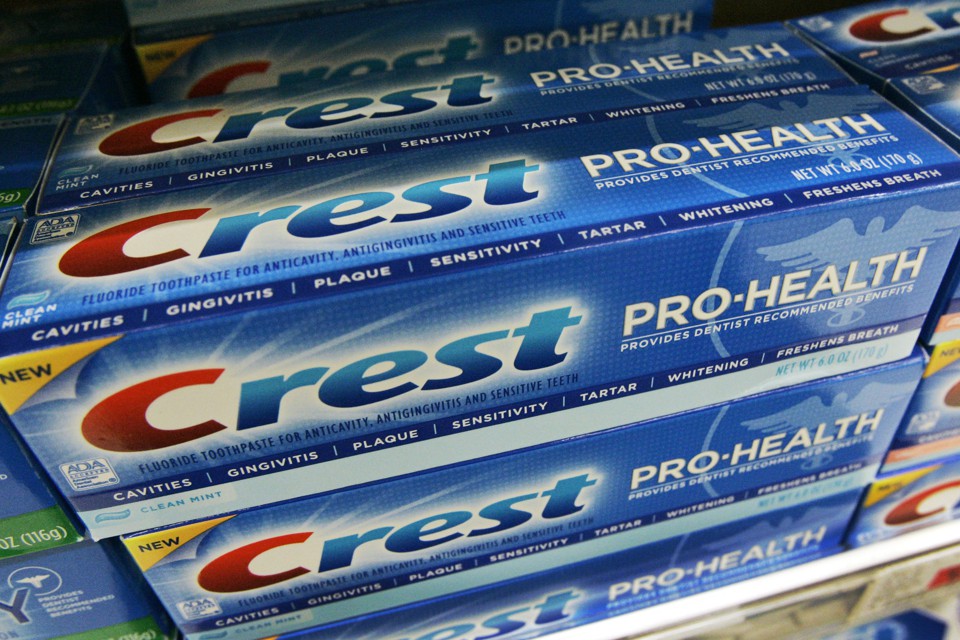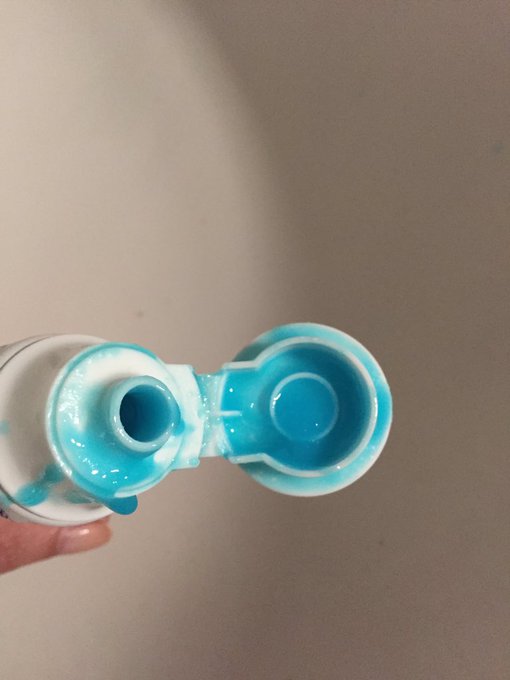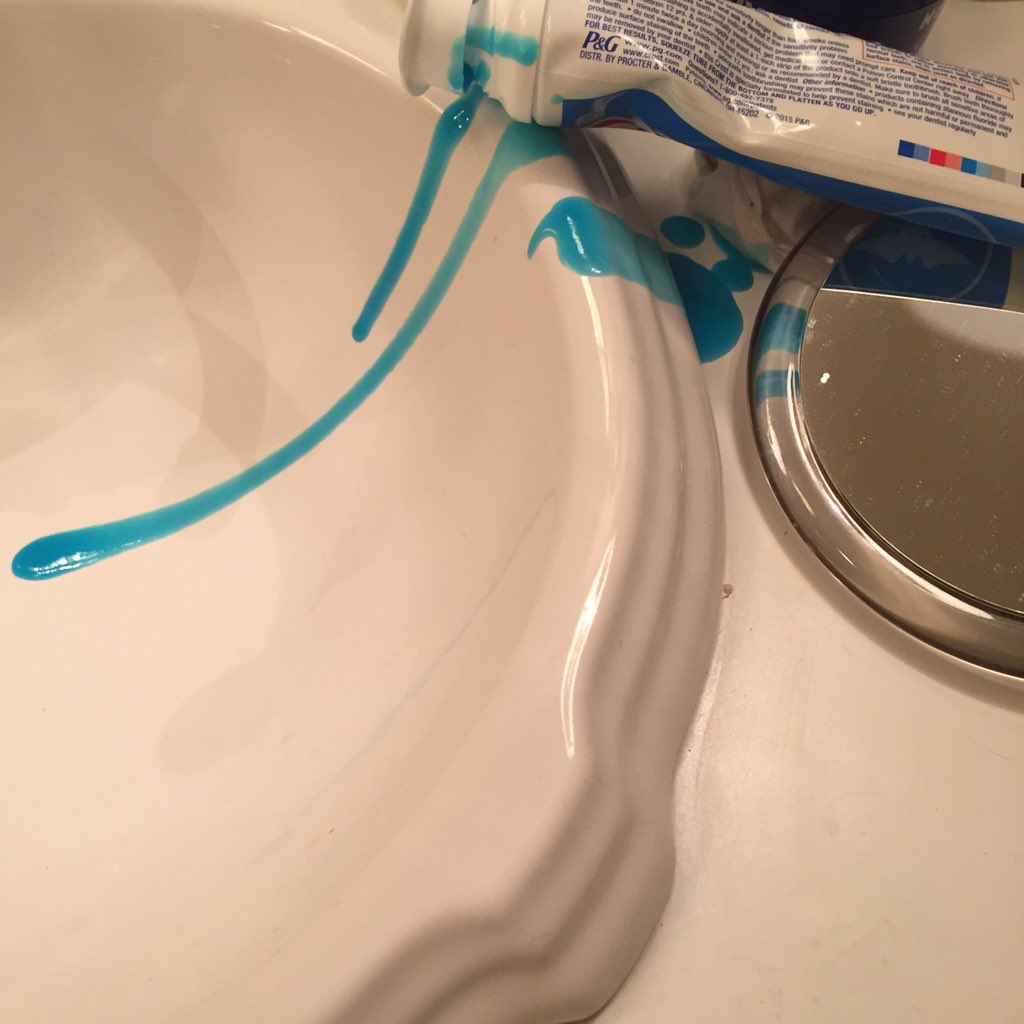Crest Has a Terrible Leaking-Toothpaste Problem
The mess made me appreciate good toothpaste-tube design.

SARAH ZHANG
APR 17, 2017
At first, I blamed my boyfriend. A shared bathroom is already the site of so many petty annoyances that naturally I assumed the regular puddles of blue toothpaste on our sink were his fault. He could not, after all, be trusted to orientate the toilet paper properly, so why would I trust him to close the cap on the toothpaste?
Then I tried to put the cap on the Crest Pro-Health tube, and it would not snap shut. Huh, not his fault. I wiped up the puddle. I forgot about it. I wiped up another puddle the next day. We finished the tube.
I was happy to let this bygone be bygone until I learned it is a thing. Crest Pro-Health toothpaste is a known leaker. The cap does not close properly and the paste oozes out and I am not alone. Last week, GQ writer Caity Weaver tweeted a PSA, unleashing a tide of Crest complaints.
PSA 2 save a life: This is the worst toothpaste ever designed by man OR demon. It will turn yr bathroom into a bright blue toothpaste swamp pic.twitter.com/KRi7ZcME43
Update: One brave Twitter user has created a Twitter moment about the LEAKING NEON HORRORS of Crest Pro Healthtwitter.com/i/moments/8463…
The complaints seem to date at least as far back as 2009.
To be fair, this does not appear to happen with every single tube or every single user. Some people seem to think this is the fault of a less enlightened brusher.Stop squeezing your tube from the middle, they say. Store your toothpaste cap-side down, they say.
Do not let a debate over proper toothpaste-squeezing or storage technique distract you. As an adult with average inclination toward oral hygiene, I have used hundreds of tubes of toothpaste the same way and never had a leaking problem. Something is specifically wrong with Crest Pro-Health. Besides, I called up a professional, Bryce Rutter, an expert in ergonomics and hand-intensive devices, and he had this to say: “I’m kind of shocked this is still on the market. Really, this is a very gross oversight in design.”
Crest recognizes the problem. A spokesperson said in an email, “I can confirm that we (a cross-functional team including Brand and R&D) are actively working on a solution, and hope to have it in market soon.” She added that the toothpaste was reformulated in early 2017, and that new packaging would be on the market in 6 months to a year.
What is so terribly wrong about the current packaging? I asked Rutter to critique the design. (Rutter has worked on oral care products for Oral-B, now part of Crest’s parent company, Procter & Gamble, as well as many of its competitors.)
The big problem, according to Rutter, is the way the cap snaps shut. The spout where the toothpaste comes out has a slight lip. When the circle of plastic on the inside of the lid passes over this lip, you get the satisfying snap that tells you the lid is closed and will stay closed. It works great when the toothpaste tube is new. But when the pieces have to fit together so precisely, you don’t have much leeway.
“If you have half a millimeter of build-up of toothpaste inside the cap, the tolerance of the parts are such it won’t snap,” says Rutter. And it won’t close. The fix, he says, is simply to move the snap mechanism to a different part of the cap, like the edge.
After repeatedly squeezing and staring at a tube of Crest Pro-Health and the non-Crest, non-leaking toothpaste I’m currently using, I think the problem is not the cap alone. As Lisa Pierce, the executive editor of the trade publicationPackaging Digest, puts it, “It could be the combination of the package and product.”
Crest Pro-Health is more liquidy than typical toothpaste, which makes it more prone to smearing and leaking, which makes the cap harder to close, which makes it leak even more, and so on. The toothpaste has also a gritty texture, and the tiny, hard particles may lodge in the snap mechanism. (Crest’s statement: “The current Crest Pro-Health product is uniquely formulated to deliver superior health benefits including cavity, plaque, gingivitis, and sensitivity protection. This unique formulation presents some package challenges which we have been focusing on solving.”)
After writing several hundred words about this admittedly tiny irritation, I feel I need to say at the risk of she doth protest too much: I’m not mad. But rather, this has been an illuminating window into the usually invisible work of creating a functional, non-leaking toothpaste tube. These plastic caps might cost pennies and get tossed out thoughtlessly, but they are highly engineered. The parts have to fit together precisely and a sub-millimeter error can throw the whole thing off.
Designing household items also requires thinking through all the different use cases. Maybe this flip-top cap opens and shuts fine for a person of average thumb strength. But what about a kid who also needs toothpaste? An elderly man with Parkinson’s? A woman with a manicure? “With closures, most of the designs are done by males,” says Rutter. “And what I always tell my industrial designers in my company is you need to go out and buy some fake fingernails and spend a day with them because it really changes the way you use your finger tips.”
Pierce, the Packaging Digest editor, notes that the modern toothpaste packaging form—plastic tube, wide flat top—is actually a somewhat recent invention. One major change was the conversion from aluminum tubes to laminate tubes made of layered plastic. Aluminum was originally chosen because it is good at keeping oxygen out of the tube and thus keeping the toothpaste fresh. But it’s also susceptible to dings and dents. “For laminate tubes, you could have a gorilla jump on it and it’ll still look good,” says Pierce.
And in the ’80s or ’90s, she says, toothpaste makers started switching from screw tops to flip tops, which have the added convenience of letting you open them with only one hand. You also don’t have to worry about dropping the cap. It’s what the people wanted. As the Crest spokesperson said, “The flip-top cap is the result of extensive market research to serve a diverse consumer population, including those with specific dexterity needs.”
If only, perhaps, they had paid a bit more attention to our non-leaking needs.
https://www.theatlantic.com/health/archive/2017/04/crest-toothpaste-problem/523032/






No comments:
Post a Comment